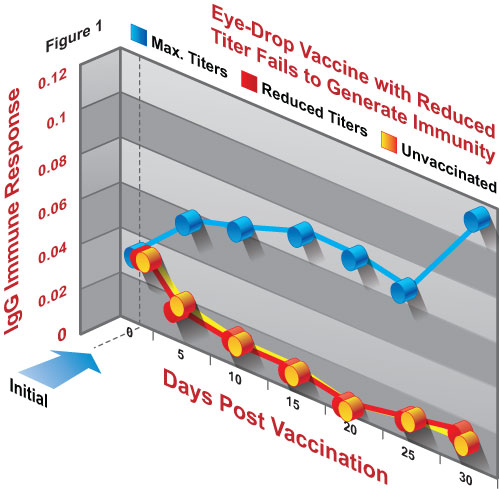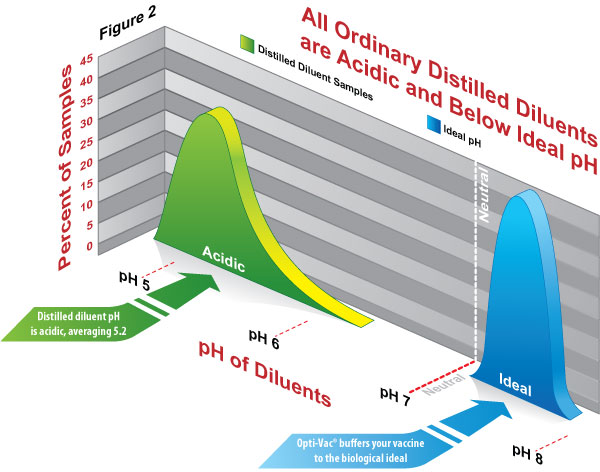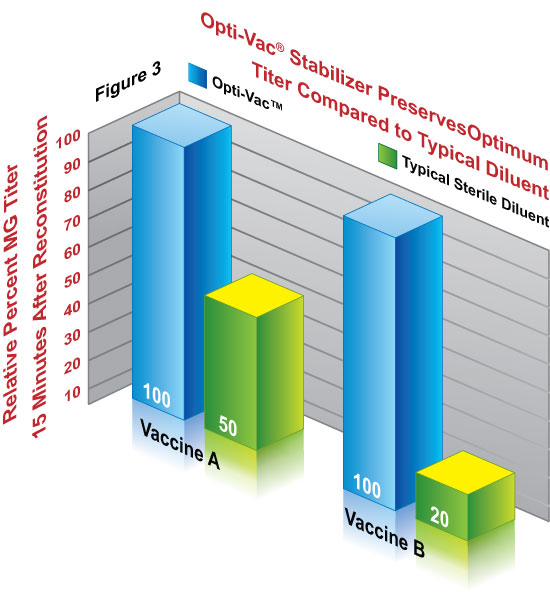 Because Every Drop Counts
Because Every Drop Counts
Protects Vaccine Investment • Maximizes Immune Response • Economic & Effective
Poultry eye-drop vaccines are designed to deliver maximum immunization and Opti-Vac eye-drop vaccine stabilizer works to protect every dose. Even though eye-drop application assures each bird gets vaccinated, it does not always guarantee optimal vaccine stability or resulting immunity. This is because inappropriate diluents are frequently used to deliver eye-drop vaccine. When eye-drop vaccines are rehydrated with distilled water or ordinary sterile diluent, they immediately begin to lose large portions of their activity. The vaccines die quickly because the water used to dilute them is not biologically ideal. Ocular vaccines and the immunity they provide are too valuable to sacrifice performance by administering them with an unsuitable diluent. Opti-Vac eye-drop vaccine stabilizer provides an environment that is designed to meet the vaccine’s needs, preserving valuable titers drop after drop. Rehydrated eye-drop vaccines must be stable if they are to retain optimum potency and generate full immunity. Toro et al. (1997) demonstrated how a decline in eye-drop vaccine titers can produce an inadequate immune response. Hens that were vaccinated with an optimal dose of infectious bronchitis virus (IBV) vaccine (106 EID50/ml) generated significantly higher immune responses than hens receiving a vaccine in which titers had dropped to a lower concentration (104 EID50/ml). The hens receiving the low-titer vaccine produced an immune response that was just as poor as the birds that had received no vaccine at all (Figure 1). A reduction in vaccine titer rendered the vaccine completely useless. Stabilizing eye-drop vaccines with Opti-Vac is an important step in preventing titer loss and ensuring that the first dose delivered is as potent as the last.
- Optimum pH for Antigen Survival
- Isotonic Environment to Protect Vaccine Titer
- Protects Antigen Conformation
- Prevents Vaccine Clumping for Even Dosing
- Provides Unsurpassed Uniformity
Optimum pH for Antigen Survival
Unstable sterile diluents pose several hazards to live vaccines. Ordinary distilled water diluents are acidic by nature. This causes a rapid loss of vaccine titer after reconstitution. A survey completed by the United States Department of Agriculture (USDA) showed that distilled water diluents have an average pH of 5.2 with a range of 4.9 to 6.2 (Figure 2). Most live vaccines require a more neutral pH (7.4 – 7.8) to survive. Vaccines that are diluted with an acidic diluent die very rapidly, meaning most of the flock will not receive the proper dose to develop good immunity. Because Opti-Vac eye-drop stabilizer keeps vaccines at the ideal pH, titers are maintained until the very last drop.
Isotonic Environment to Protect Vaccine Titer
In addition to requiring a proper pH, live vaccine antigens also require an isotonic environment. Low tonicity is particularly detrimental to fragile bacterial vaccines, such as Mycoplasmas. USDA researchers compared the survival of two MG vaccines diluted with isotonic Opti-Vac stabilizer or a typical hypotonic diluent to demonstrate this effect (Leigh et al., 2008). Using Opti-Vac to rehydrate the vaccine prevented a loss of titer, preserving the full strength of each dose (Figure 3). The ordinary sterile diluent caused a 50-80% loss of the vaccines’ titers when compared to vaccine rehydrated with Opti-Vac. Birds receiving the vaccine mixed with ordinary diluent would receive only 20-50% of the proper dose needed to develop a solid immune response.
Opti-Vac’s ability to produce strong, uniform immunity was demonstrated in the field. Serum plate agglutination (SPA) results using data from commercial laying hens illustrate (Figures 4 & 5) Opti-Vac’s positive effect on vaccine titer and uniformity. Figure 4 represents a flock vaccinated via spray, with a typically non-uniform immune response and weak agglutination scores. Results like these indicate that many birds in the flock did not receive a sufficiently high titer of vaccine. These birds are then susceptible to MG infection. The birds in the flock shown in Figure 5 were vaccinated via eye-drop using a vaccine mixed with Opti-Vac. This Opti-Vac combination provided 100% of the birds with the proper dose of the vaccine resulting in stronger, more uniform titers and more protection from any exposure to MG.
Poultry producers often face challenges that call for uncompromised immunity, the kind of immunity eye-drop vaccines and Opti-Vac are engineered to deliver. Modern vaccines and the performance they offer are too valuable to waste. Opti-Vac eye drop stabilizer works with vaccines, stabilizing and protecting them to optimize the efficacy of each dose delivered. Opti-Vac stabilizer- Because Every Drop Counts.
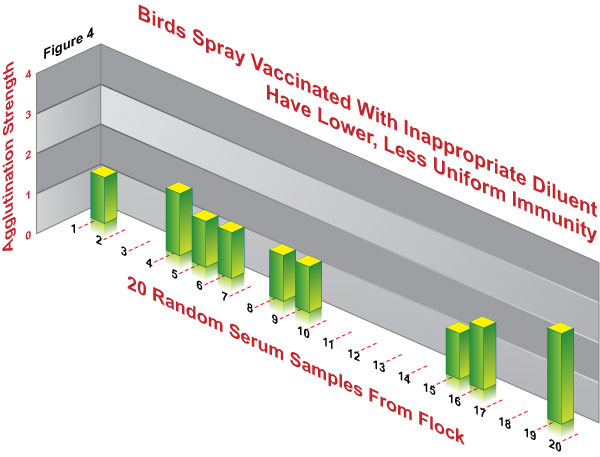
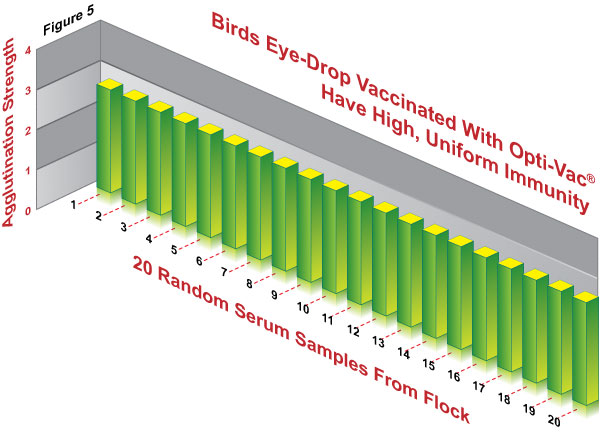
Additional information and related articles on Opti-Vac®
Spec Sheet | SDS | SDS Spanish | SpecSheet Chinese | Opti-Vac gives your optical vaccines the nurturing environment necessary for survival during the time-consuming process of hand-administration.
RELATED ARTICLES:
Opti-Vac Brochure PDF | ARTICLE
Vaccine Stabilizer Brochure PDF
Vaccine Stabilizer Brochure Spanish PDF
Vaccine Stabilizer Brochure Chinese PDF
Mailing Address:
Animal Science Products, Inc
PO Drawer 631408
Nacogdoches, TX 75963 - 1408
Physical Address:
3418 Rayburn Drive
Nacogdoches, Texas 75961
Phone & Fax
800.657.2324
936.560.0003

